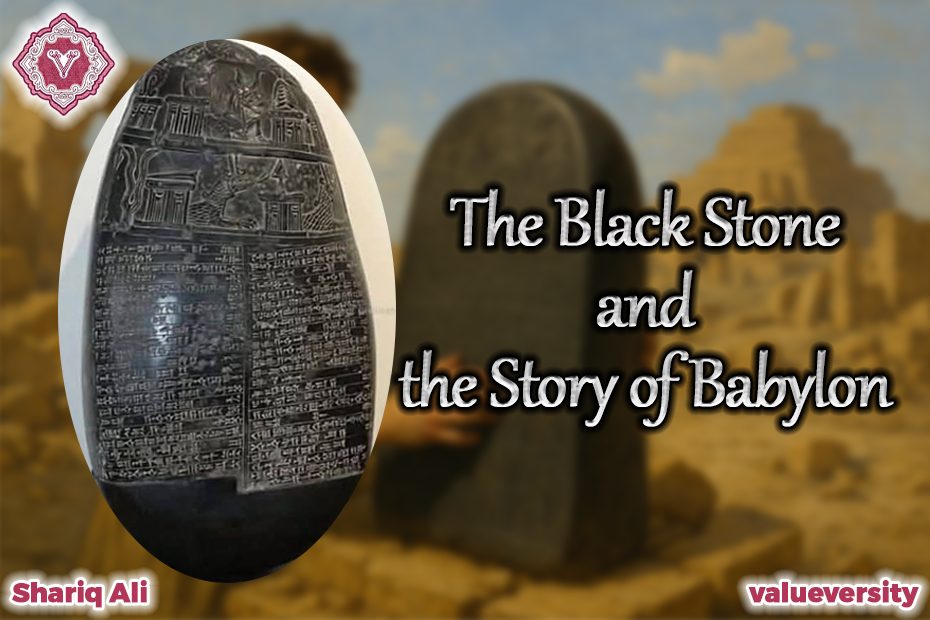The Black Stone and the Story of Babylon
By Shariq Ali
Valueversity
The year was 1786. In the scorching sun of Baghdad, a French botanist named André Michaux wandered through the ruins of ancient buildings. He was a researcher of flowers and plants, but that day, fate gifted him with something extraordinary.
Near the ruins of Taq Kasra—where ancient history still seems to breathe—he spotted a heavy black stone. Strange markings and mysterious inscriptions were carved into it. Michaux stopped. He examined the stone closely and sensed it was no ordinary rock. He decided to take it with him.
For several years, the stone remained in his possession. Then in 1800, André Michaux sold it to a French museum for 1,200 francs. Soon after, it was preserved in the National Library of Antiquities. There, historians from across Europe turned their attention to it. Further research revealed that the stone—called a Kudurru—was the first complete written artifact from ancient Mesopotamia to reach Europe.
This Kudurru dated back to the reign of the Babylonian king Marduk-nadin-ahhe (1099 to 1082 BCE). It stood 46 centimeters tall, 20 centimeters wide, and weighed 22 kilograms. It bore 95 lines of text and 21 symbolic carvings.
In 1861, renowned British linguist Henry Rawlinson began studying it, and finally in 1895, French scholar Jules Oppert completed its full translation.
This was no ordinary stone—it was a tale buried beneath the layers of time, retold and heard once again on European soil thousands of years later.
André Michaux’s discovery became a gateway for the world to witness the grandeur, knowledge, and civilization of Babylon. It offered a fresh insight and perspective into the rich history of Mesopotamia.
